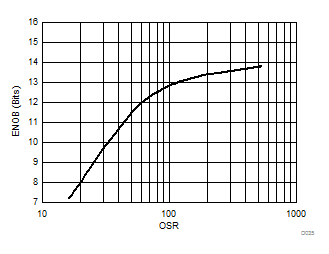JAJSG25B August 2018 – April 2020 AMC1035
PRODUCTION DATA.
8.2.1.3 Application Curve
The effective number of bits (ENOB) is often used to compare the performance of ADCs and ΔΣ modulators. Figure 46 shows the ENOB of the AMC1035 with different oversampling ratios on a sinc3 filter. This number is calculated from the SINAD by using Equation 3 in this document.
Equation 3. 


| Sinc3 filter |